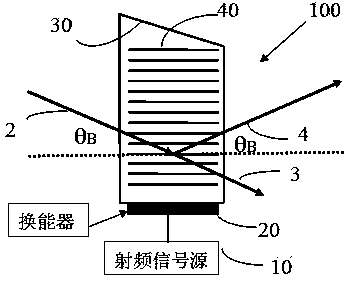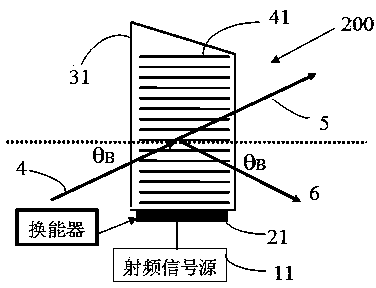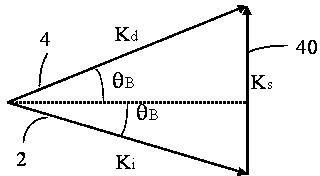Tunable laser system
A technology for tuning lasers and lasers, which is applied to lasers, laser components, semiconductor lasers, etc., can solve the problems of wide filter bandwidth, poor ability to resist various mechanical vibrations, and difficulty in realizing it, and meet the requirements of reducing filter bandwidth. The effect of no mechanical moving parts, easy installation and production
- Summary
- Abstract
- Description
- Claims
- Application Information
AI Technical Summary
Problems solved by technology
Method used
Image
Examples
Embodiment Construction
[0037] Embodiments of the present invention will be described in further detail below in conjunction with the accompanying drawings.
[0038] Tunable acousto-optic filters
[0039] figure 1 It is a structural schematic diagram of an existing tunable acousto-optic filter 100, the tunable acousto-optic filter includes a transducer 20 and an acousto-optic crystal 30, the radio frequency signal source 10 is connected to the transducer 20, and the incident light beam 2 at Bragg angle θ B Incident to the acousto-optic crystal 30 , the zero-order diffracted beam 3 and the first-order diffracted beam 4 are generated.
[0040] image 3 The wave vector relationship diagram of the incident light beam, the acoustic wave field and the diffracted light beam in the acousto-optic crystal of the tunable acousto-optic filter 100 is given.
[0041] The working principle of the acousto-optic filter is based on a phenomenon of Bragg diffraction. Bragg diffraction involves the interaction of...
PUM
 Login to View More
Login to View More Abstract
Description
Claims
Application Information
 Login to View More
Login to View More - R&D
- Intellectual Property
- Life Sciences
- Materials
- Tech Scout
- Unparalleled Data Quality
- Higher Quality Content
- 60% Fewer Hallucinations
Browse by: Latest US Patents, China's latest patents, Technical Efficacy Thesaurus, Application Domain, Technology Topic, Popular Technical Reports.
© 2025 PatSnap. All rights reserved.Legal|Privacy policy|Modern Slavery Act Transparency Statement|Sitemap|About US| Contact US: help@patsnap.com



